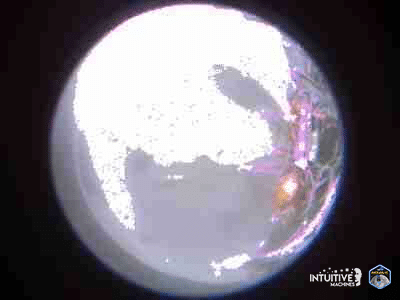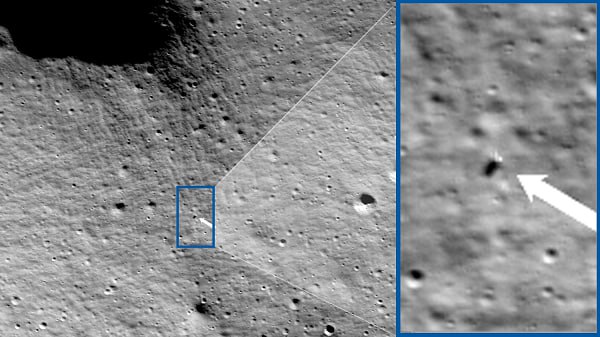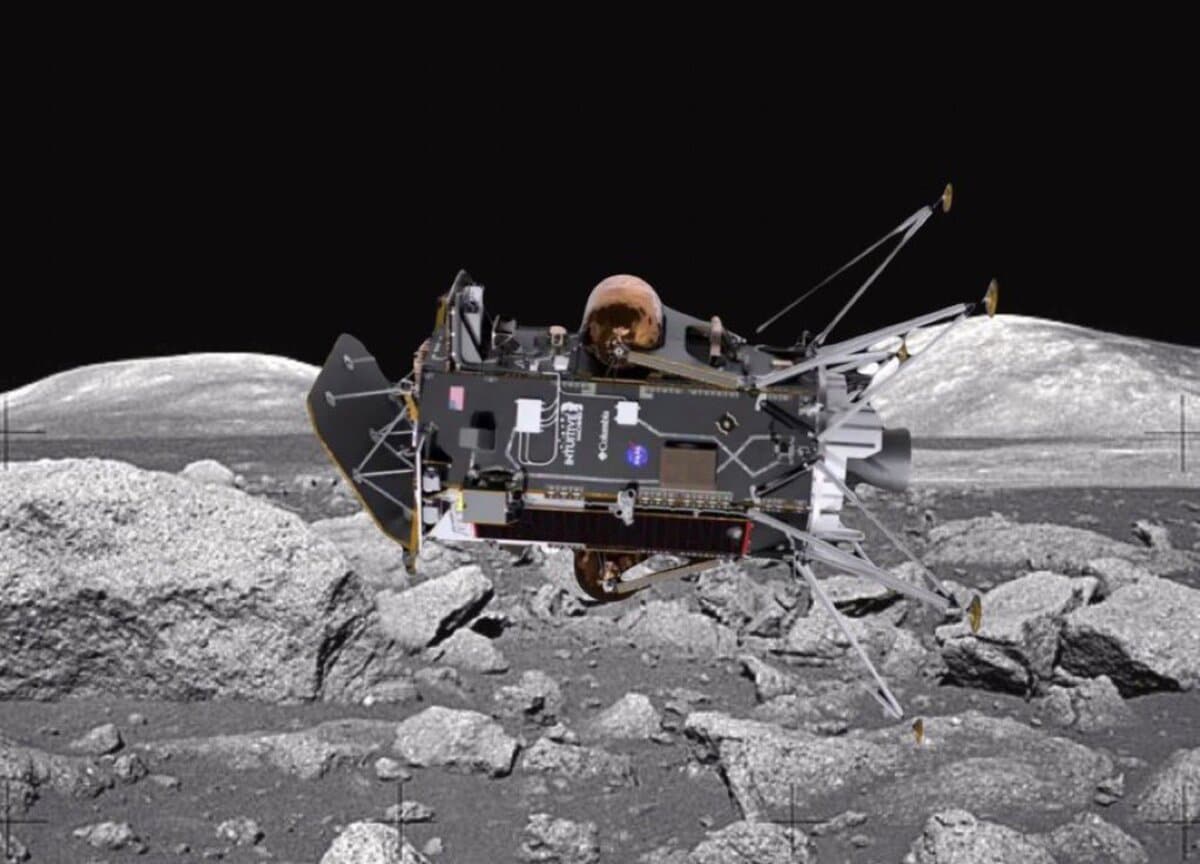Due to the landing on the side, the antennas of the device turned out to be directed in the wrong direction, which made it extremely difficult for them to transmit data. Therefore, there were no pictures from him in the first few days after landing. Now the situation has changed, although it was possible to obtain only very low-resolution images. Nevertheless, the developers hope that the device will be able to transmit some amount of scientific data.
The Odyssey automatic lander landed gently on February 23, 2024. However, for reasons not yet fully understood, he did it on his side. Therefore, now there is a unique situation on the Moon: on the side facing us there are two "tumbling" working Earthlings. The Japanese SLIM stands "on its head" while its American counterpart lies on its side.
In general, based on reports from Intuitive Machines, the private space company that created Odyssey, things could have been much worse. The fact is that after the ground tests, the technician forgot to activate the fuse that makes the standard lasers of the landing control system functional. From this, it was necessary to sit down with the help of improvisation — using instead of regular lasers a scientific load already for the surface of Selenium.
Because of this, the developers were careful and did not throw a special shooting module slightly to the side before landing, which was supposed to shoot a landing on another celestial body from a third person for the first time in history. As a result, it is now completely unclear why the device fell on its side. The developers claim that the whole point is its outstanding lateral speed of 3.2 kilometers per hour, associated with abnormal landing control. However, in the 20th century, a number of lunar exploration vehicles landed normally even at such an outstanding lateral velocity. We have already described alternative possible explanations for the partial landing failure earlier.
However, now the company's representatives have shared new data that can clarify the problem. NASA's artificial Moon satellite LRO was able to remove Odyssey from orbit. As a result, it turned out that the landing point was maintained with high accuracy. The lunar landing actually took place in the Malapert A crater, at a point with coordinates of 80.13 ° south latitude and 1.44 ° degrees east longitude, at an altitude of 2579 meters.
 |
| The only picture transmitted during the operation of the Odyssey is of very poor quality. |
| Source: Intuitive Machines |
The slope of the surface here is estimated at 12 degrees. This is quite significant, especially given the not very stable shape of the device (its analogues from the 20th century had a much lower center of gravity). In such conditions, even a small lateral velocity could really lead to a fall.
The question remains why the landing system chose such a significant slope. The likely answer to it is this: Odyssey had the first fully autonomous landing control system in the history of the Moon landing. That is, the decision on where to land was made by an automatic system. Meanwhile, back in 1968, at the first landing of people on the Moon, the automatic selection of the landing point almost destroyed the lunar module with people, choosing an area with large boulders for landing. It turns out that something similar has happened to Odyssey these days. Only there were no astronauts on board who could intercept control and choose a different landing site.
According to new data, the Odyssey solar panels are at a more unfavorable angle to the Sun than expected. Because of this, its connection with the Earth is expected to cease today, February 27, 2024. The only image he transmitted from the Moon during this time is of rather poor quality. Theoretically, there are chances of waking up after a moonlit night, like the Japanese SLIM device, which recently unexpectedly "revived". Unfortunately, this is not a very high probability, since there is no radioisotope heater on board the Odyssey. That is, its electronics will cool down to at least -170 Celsius at night, which can adversely affect its performance.
 |
| The image from orbit shows the spacecraft itself, it is located in a blue rectangle. |
| Source: NASA |
Although the overall impression of the first landing of an American spacecraft on the Moon in 52 years may seem blurred by the fact that it practically did not have time to transmit valuable data, in fact we are still talking about a great success. In the XXI century, from the first attempt to land an automatic device on the Moon, so far only the Chinese have succeeded. The first attempt of this kind by the Israelis, Japanese, Indians, Russians (Luna-25) and Americans (Peregrine) ended in complete failure. The second attempt by Japan and the United States brought an abnormal position of the device after landing, which makes it very difficult to obtain scientific data. It is clear that even a simple soft landing, even in an abnormal position against this background, is a significant achievement.
Fortunately, the situation will completely change in this decade: Starship will land a manned expedition on the Moon. As Naked Science wrote earlier, the capabilities of humans in exploring other celestial bodies radically exceed the capabilities of automata, so a manned landing will be able to provide incomparably more important scientific data on controversial issues directly affecting the suitability of the Moon for human exploration.

